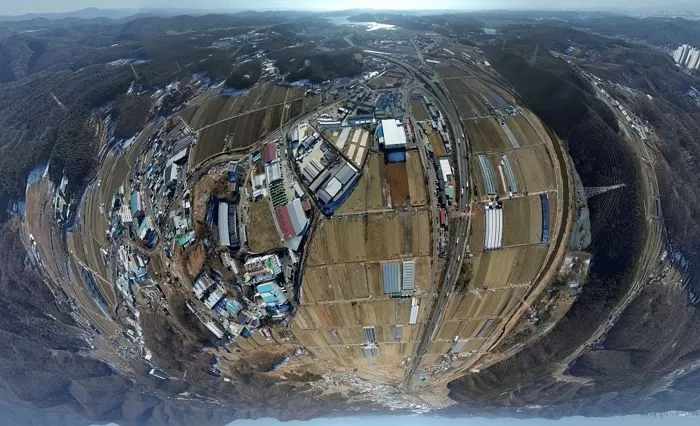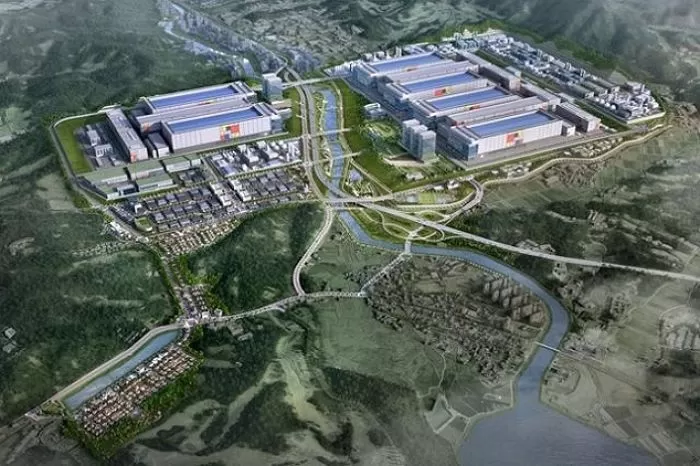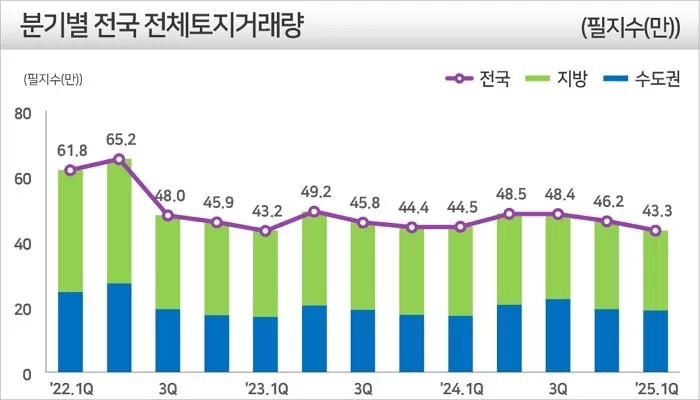National Land Price Surge in Q1: Gangnam District in Seoul and Cheoin District in Yongin Lead the Way
In the first quarter of this year, the average national land price rose by 0.5%, with Gangnam District in Seoul recording the highest increase of 1.30%.
Surprisingly, the second-highest increase was observed in Cheoin District of Yongin City, Gyeonggi Province, at 1.26%.
It is unusual that a peripheral area in the metropolitan area recorded such a high increase amid the ongoing trend of rising real estate prices led by central Seoul.

According to the ‘Q1 2024 National Land Price Change Rate and Land Transaction Volume’ data released by the Ministry of Land, Infrastructure and Transport on the 24th, the national land price increased by 0.50%, a decrease of 0.06 percentage points compared to the previous quarter.
Following an increase of 0.59% in Q3 last year and 0.56% in Q4, the rate of increase is showing a decreasing trend.
On a monthly basis, the price has been on a continuous rise for 25 months since March 2023, but the momentum seems to have somewhat slowed.
Regional Disparity in Price Increases and Rapid Rise of Cheoin District
When looking at regional increases, the price increase rate in the metropolitan area was 0.66%, while in non-metropolitan areas it was 0.22%, showing a clear disparity. Among the 17 cities and provinces in the country, Seoul recorded the highest increase rate of 0.80%, followed by Gyeonggi Province (0.57%) and Busan (0.33%).

In contrast, Jeju Island saw a decline of 0.21%, continuing its decrease for six consecutive quarters.
At the city and district level, Gangnam District in Seoul recorded the highest increase rate of 1.30%. This is attributed to various factors, including demand for high-end residential areas, redevelopment issues in Gangnam, and large-scale development plans.
However, the area that attracted the most attention this quarter is undoubtedly 'Cheoin District in Yongin City.'
This district recorded a land price increase rate of 1.26%, placing it second nationally. This appears to be directly linked to the large-scale semiconductor cluster project led by Samsung Electronics.

Cheoin District is slated to become Korea's largest high-tech industrial complex, and expectations for infrastructure expansion and job creation seem to be reflected in the land prices.
The third highest increase rate was 1.16% recorded in Seocho District in Seoul. Traditional high-end residential areas, a legal town, and excellent transportation infrastructure were contributing factors.
Population Decline Areas and Changes in Land Transaction Volume
The average land price increase rate for the 89 districts classified as population decline areas was 0.18%, which is 0.34 percentage points lower than the 0.52% recorded in non-designated areas. This indicates a continuing contraction in the real estate market and a lack of demand in small and medium-sized cities in the provinces.
Overall, land transaction volumes showed a decreasing trend. In the first quarter, the total land transaction volume was approximately 433,000 plots (285.8㎢), a 2.6% decrease compared to the same period last year.

The volume of pure land transactions, excluding land attached to buildings, was about 150,000 plots (261.2㎢), marking declines of 11.5% compared to last year and 8.8% compared to the previous quarter.
Regionally, Gwangju saw an increase of 105.7% in pure land transaction volume, showing the most active trading, while Jeonnam saw a slight increase of 1.7%. Conversely, most regions, including Daegu (-32.1%) and Jeju (-23.7%), showed a significant decrease in transaction volumes.
The current land price increase rate can be interpreted as a result of the disparity between the metropolitan and non-metropolitan areas, the impact of specific development opportunities, and the recession in areas at risk of local extinction.
In particular, the rapid rise of Cheoin District in Yongin serves as a clear example of the influence of development plans, such as large-scale industrial clusters, on local real estate prices.
Image source: View of the Yongin Advanced System Semiconductor National Industrial Complex site in Idoong-eup, Yongin City, Gyeonggi Province / News1, Q1 2025 National Land Price Change Rate / Ministry of Land, Infrastructure and Transport, Bird’s-eye view of Yongin Advanced System Semiconductor National Industrial Complex / Korea Land and Housing Corporation, Quarterly National Total Land Transaction Volume / Ministry of Land, Infrastructure and Transport


